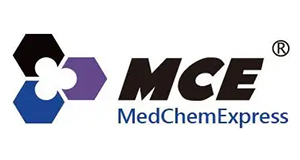Theophylline-d3, CAS 65566-68-9
Theophylline-d3, CAS 65566-68-9
SKU
MEXHY-B0809S1-0
Packaging Unit
Get quote
Manufacturer
MedChemExpress
Availability:
loading...
Price is loading...
Product Description: Theophylline-d3 is deuterated labeled Theophylline (HY-B0809). Theophylline (1,3-Dimethylxanthine) is a potent phosphodiesterase (PDE) inhibitor, adenosine receptor antagonist, and histone deacetylase (HDAC) activator. Theophylline (1,3-Dimethylxanthine) inhibits PDE3 activity to relax airway smooth muscle. Theophylline (1,3-Dimethylxanthine) has anti-inflammatory activity by increase IL-10 and inhibit NF-κB into the nucleus. Theophylline (1,3-Dimethylxanthine) induces apoptosis. Theophylline (1,3-Dimethylxanthine) can be used for asthma and chronic obstructive pulmonary disease (COPD) research[1][2][3][4][5].
Applications: Cancer-programmed cell death
Formula: C7H5D3N4O2
References: [1]Russak EM, et al. Impact of Deuterium Substitution on the Pharmacokinetics of Pharmaceuticals. Ann Pharmacother. 2019 Feb;53(2):211-216./[2]Rabe KF, et, al. Theophylline and selective PDE inhibitors as bronchodilators and smooth muscle relaxants. Eur Respir J. 1995 Apr;8(4):637-42./[3]Németh ZH, et, al. Amrinone and theophylline differentially regulate cytokine and nitric oxide production in endotoxemic mice. Shock. 1997 May;7(5):371-5./[4]Ichiyama T, et, al. Theophylline inhibits NF-kappa B activation and I kappa B alpha degradation in human pulmonary epithelial cells. Naunyn Schmiedebergs Arch Pharmacol. 2001 Dec;364(6):558-61./[5]Ito K, et, al, Adcock IM, Barnes PJ. A molecular mechanism of action of theophylline: Induction of histone deacetylase activity to decrease inflammatory gene expression. Proc Natl Acad Sci U S A. 2002 Jun 25;99(13):8921-6./[6]Barnes PJ. Theophylline. Am J Respir Crit Care Med. 2013 Oct 15;188(8):901-6.
CAS Number: 65566-68-9
Molecular Weight: 183.18
Research Area: Cancer
Solubility: 10 mM in DMSO
Target: Adenosine Receptor;Apoptosis;Endogenous Metabolite;HDAC;Interleukin Related;Isotope-Labeled Compounds;Phosphodiesterase (PDE);TNF Receptor
Applications: Cancer-programmed cell death
Formula: C7H5D3N4O2
References: [1]Russak EM, et al. Impact of Deuterium Substitution on the Pharmacokinetics of Pharmaceuticals. Ann Pharmacother. 2019 Feb;53(2):211-216./[2]Rabe KF, et, al. Theophylline and selective PDE inhibitors as bronchodilators and smooth muscle relaxants. Eur Respir J. 1995 Apr;8(4):637-42./[3]Németh ZH, et, al. Amrinone and theophylline differentially regulate cytokine and nitric oxide production in endotoxemic mice. Shock. 1997 May;7(5):371-5./[4]Ichiyama T, et, al. Theophylline inhibits NF-kappa B activation and I kappa B alpha degradation in human pulmonary epithelial cells. Naunyn Schmiedebergs Arch Pharmacol. 2001 Dec;364(6):558-61./[5]Ito K, et, al, Adcock IM, Barnes PJ. A molecular mechanism of action of theophylline: Induction of histone deacetylase activity to decrease inflammatory gene expression. Proc Natl Acad Sci U S A. 2002 Jun 25;99(13):8921-6./[6]Barnes PJ. Theophylline. Am J Respir Crit Care Med. 2013 Oct 15;188(8):901-6.
CAS Number: 65566-68-9
Molecular Weight: 183.18
Research Area: Cancer
Solubility: 10 mM in DMSO
Target: Adenosine Receptor;Apoptosis;Endogenous Metabolite;HDAC;Interleukin Related;Isotope-Labeled Compounds;Phosphodiesterase (PDE);TNF Receptor
| SKU | MEXHY-B0809S1-0 |
|---|---|
| Manufacturer | MedChemExpress |
| Manufacturer SKU | HY-B0809S1-0 |
| Package Unit | Get quote |
| Quantity Unit | STK |
| Product information (PDF) | Download |
| MSDS (PDF) |
|

 Deutsch
Deutsch






